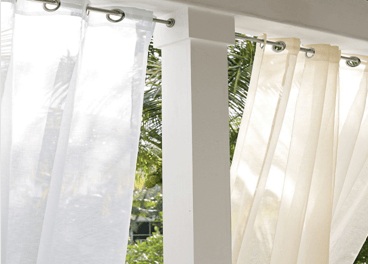Various types of curtains can be used to make a home more beautiful. Every homeowner wants to decorate their windows with fancy curtains. These window treatments add style and color to any window while maintaining privacy and preventing direct sunlight from entering the room.
Curtains at home play an important role in enhancing the décor through texture, fabric, style, color, and pattern. Curtains are one of the most important elements in your home, giving your doors and windows a beautiful and aesthetic appearance.
The main function of curtains is to block light and their other purpose is to add a decorative accent to the room. Curtains can be purchased in panels or pairs and can be installed, sewn, and hung in a variety of ways for different effects.
Curtains of different depths, materials, shapes, prints, and colors determine the tone and style of the room. For curtains, you don’t have to choose between function and style. There are many types of home curtains that combine functionality with great aesthetics.
To learn about the different types of curtains, we’ve put together a brief glossary of the best curtain types for your style and lifestyle.
Table of Contents
Types of Curtains Based on Hanging Style and Panel
- Single Panel Curtains
- Double Panel Curtains
- Valance Types of Curtains
- Window Treatment Set Curtains
- Window Tier Curtains
- Curtain Liner
- Window Scarf Curtains
1. Single Panel Curtains:
As the name suggests, in a single panel curtain, one panel covers the whole window.
Curtain panels can be pulled open on either side and they can be tied back to create a modern and asymmetrical look.
It is a modern curtain style and timeless style that will fit into most decorative interiors.
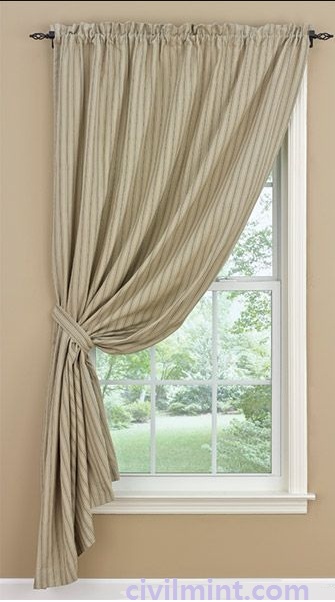
2. Double Panel Curtains:
Double panel curtain of two separate individual curtain panels. Curtains of this type are popular in classic and temporary styles.
If you want to close these curtains, you have to pull each curtain panel together. Panel pair curtains are tied back to provide a symmetrical look for your window.

3. Valance Types of Curtains:
These types of curtains are usually hung over the curtains. Valance is an additional decorative addition to a window.
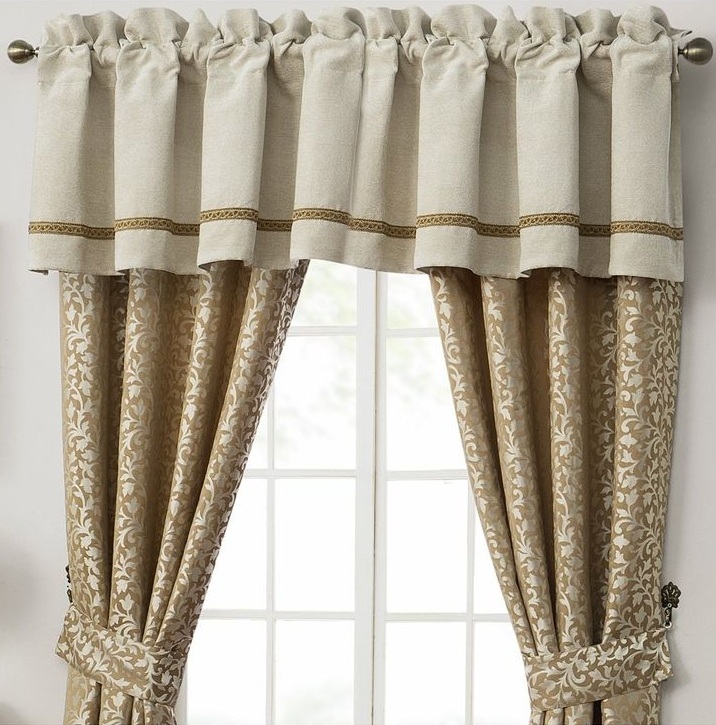
4. Window Treatment Set Curtains:
Our window treatment set includes everything you need to create the perfect window treatment.
A window treatment kit always consists of one or two curtains and a valance.
Some window kits also include accessories such as tie bars and curtain rods and, rarely, pelmets.

5. Window Tier Curtains:
Window curtains are primarily used on kitchen windows or any window where you want privacy while letting in light.
They cover the bottom of the window, but the top of the window is open.
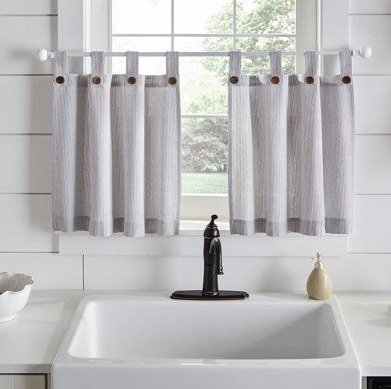
6. Curtain Liner:
Liners used for curtains are a great addition to curtains. Liners are commonly used to give curtains versatility.
Many homeowners pair sheer curtains with linings to give you more options in terms of daylight and privacy.
In addition, curtain liners have additional features. For example, it can absorb noise or insulate it.
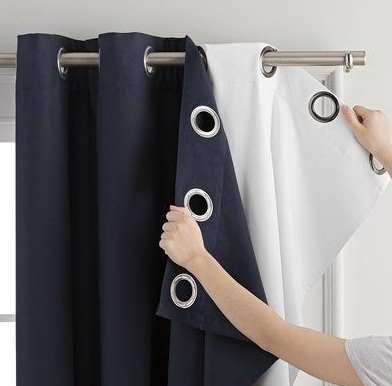
7. Window Scarf Curtains:
The window scarf curtain is very similar to the valance curtain. This type of curtain consists of a long, thin piece of fabric hanging from the top of the window.
It added elegance to the room and left a gorgeous impression. After attaching the curtain rod, you can hang the window scarf. Another option is to hang the scarf between two wall brackets.

Types of Curtains Based on Opacity
- Sheer Curtains
- Semi-Opaque Curtains
- Blackout Curtains
1. Sheer Curtains
These types of curtains are very thin and made of semi-transparent fabrics. Sheer curtains allow most daylight in a room when the curtain is closed.
Due to its transparent nature, they do not provide much privacy. Sheer curtains are best suited for living rooms and dining rooms.
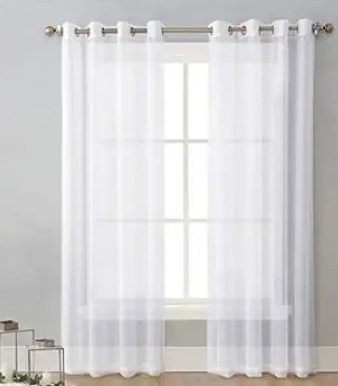
2. Semi-Opaque Curtains
It is a combination of sheer curtains and blackout curtains. Semi-Opaque curtains a little daylight in the room even when they are closed.
Semi-Opaque curtains give more privacy compared to sheer curtains.
These types of curtains are widely used for all applications and can be combined with other curtains and hung on double curtain rods to increase opacity.

3. Blackout Curtains
Blackout curtains allow very little light to enter the room when closed. These curtains are made of heavier materials and often have built-in liners.
These curtains provide the most privacy and often have additional functions beyond decorative purposes. People often use blackout curtains in bedrooms, theaters, or other places where blocking out natural light is important.
Sometimes blackout curtains are used over sheer curtains to provide additional functionality and a more refined look than can be achieved with simple curtain linings.
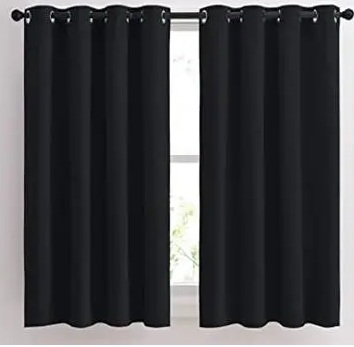
Types of Curtains Based on Attachment Style
- Rod Pocket Curtains
- Grommet and Eyelet Curtains
- Tab Top Curtains
- Hidden Tab Curtains
1. Rod Pocket Curtains
Rod pocket curtains have a sewen pocket on the top of the curtain. To hang the curtain, put the rod into the pocket and then hang the rod.
Rod pocket curtains can be used with a valance or without valance.
These types of curtains are normally made of cotton or linen.
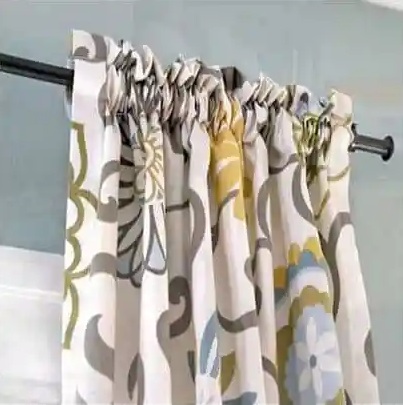
2. Grommet and Eyelet Curtains
Grommet and Eyelet curtains have large eyelets on the top of the curtain that is reinforced with grommets.
Curtains in this style are especially popular in modern or contemporary styles.

3. Tab Top Curtains
In this type of curtain, loops of fabrics are sewn into the top of the curtain. The curtain rod is strung up through the loops.
Sometimes these curtains are decorated with decorative ornaments such as buttons.
Tab top curtains are most popular not only in everyday styles but also in more modern country styles.

4. Hidden Tab Curtains
Hidden tab curtains are a combination of rod pockets and tab curtains. In this style, the tabs used to hang curtains are usually hidden from view by an additional piece of fabric for decoration.
The fabric over the curtains where the tongue is hidden is often pinched to add a level of style.
These curtains are available with or without a valance. Curtains with hidden shelves are popular in traditional, rustic, or modern styles.
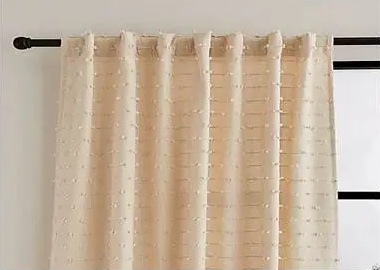
Types of Curtains Based on Curtain Length
- Sill Length Curtain
- Apron Length Curtain
- Floor Length Curtain
- Puddle Length Curtain
1. Sill Length Curtain
A sill-length curtain is ideal for windows that are left open during the day.
This type of curtain is normally suitable for kitchens, bathrooms, and small windows.
Curtains up to the window sill are hung so that they end at the same height as the window sill or slightly above the level of the window sill.
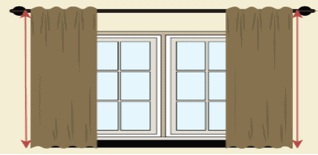
2. Apron Length Curtain
Apron curtains are a great way to maximize the look of your windows. This type of curtain is used for small windows such as kitchens, bathrooms, and some bedrooms.
Typically, the bar hangs slightly higher than the window itself, and the curtains extend a few inches below the threshold level.
When closed, apron-length curtains can make a window appear larger than it really is.
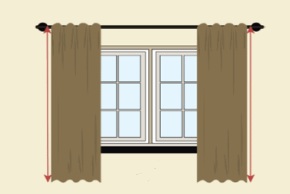
3. Floor Length Curtain
Floor-length curtains are perfect for floor-to-ceiling windows and sliding doors. They typically break less than an inch above floor level.
Floor-length curtains are also preferred for small windows that rarely open to give the illusion of floor-to-ceiling windows.
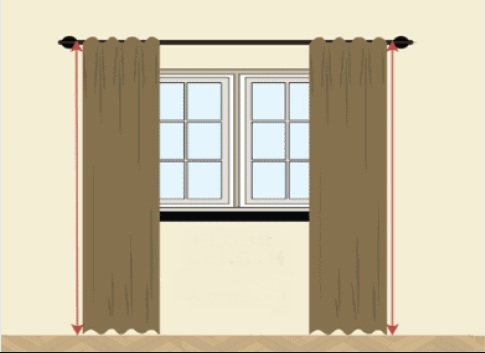
4. Puddle Length Curtain
Puddle-length is an elongated curtain that runs all the way to the floor.
It’s a few inches taller than the size of a window and they break dramatically on the floor, similar to the train of a wedding dress.
This style is especially popular when you want to create a dramatic or romantic window treatment.
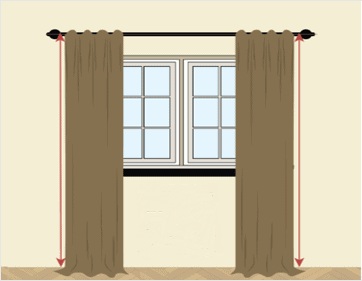
Type of Curtains Based on Materials
- Cotton Curtains
- Linen Curtains
- Velvet Curtains
- Silk Curtains
- Lace Curtains
- Burlap Curtains
- Synthetic Curtains
1. Cotton Curtains
Cotton curtains are the preferred choice for a variety of applications. Because cotton curtains are translucent, they allow in a lot of light while providing a moderate level of privacy.
Sometimes cotton curtains are combined with other fabrics to create a finished window decoration. You can find different styles of cotton curtains and they fit well into any room in the house.
These types of curtains are easy to clean, making them even more versatile.
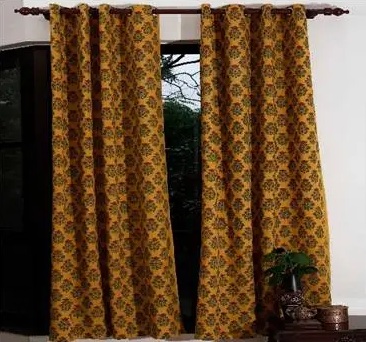
2. Linen Curtains
Linen curtains are slightly heavier than cotton curtains, but at the same time retain lightness and comfort.
Linen curtains allow for an average level of light while providing a moderate level of privacy. Linen curtains are more difficult to clean and wash than cotton curtains.
These curtains are usually not the best choice for dusty environments as the rough texture of the linen can act as a dust magnet.
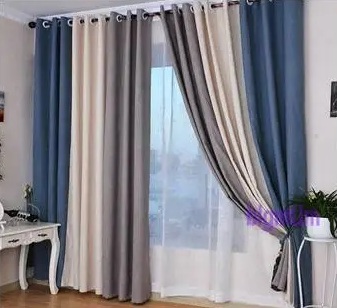
3. Velvet Curtains
Velvet curtains are another popular material. If you want maximum privacy, these curtains are your best bet. This heavy material also blocks drafts and reduces outside noise. Velvet is the best choice for light-sensitive bedrooms.
It is also a special fabric that can be used to give windows a more dramatic effect. Because velvet curtains are difficult fabrics, they are usually professionally cleaned. So if maintenance is a concern, we recommend staying away from this fabric.
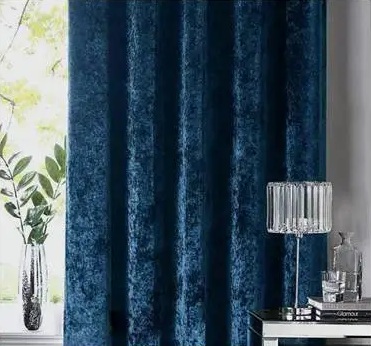
4. Silk Curtains
Silk is a luxurious, stylish, and fashionable fabric used to make various types of curtains. Like translucent curtains, depending on the thickness of the silk material, either a lot of light or a limited amount of light can enter.
Silk is a popular fabric material for both classic and modern curtains. Silk curtains are difficult to clean and usually require professional help clean.
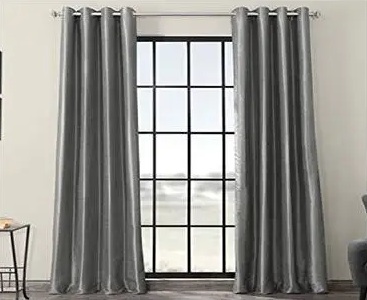
5. Lace Curtains
Lace is an excellent choice when you want to create light, bright, airy window decorations from thin fabrics.
Lace provides the least amount of privacy as these materials are the most light-transmitting. Lace is best for kitchens, living rooms, or other areas of your home where you want to get a lot of light.
Lace curtains can also be used with heavier fabrics to make the window more versatile.

6. Burlap Curtains
Burlap is similar in look and texture to linen but is much heavier than linen.
This natural, simple fabric provides more privacy by minimizing or even blocking light when the curtains are closed.
Burlap is easy to clean and looks great in everyday life.
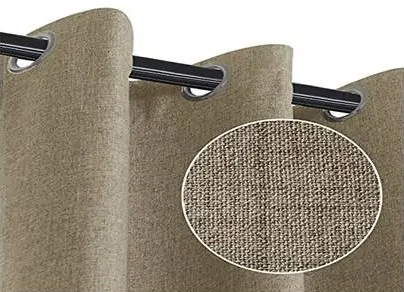
7. Synthetic Curtains
Synthetic materials have become very popular for making curtains. Synthetic curtains are less expensive to manufacture than natural fibers and are generally easier to clean.
Synthetic fiber curtains can reflect the look of the natural fabrics listed above. Synthetic is usually cheaper than natural materials.
So, if the price is an issue or if you’re looking for an easy-to-clean option, synthetic curtains may be your best bet.
